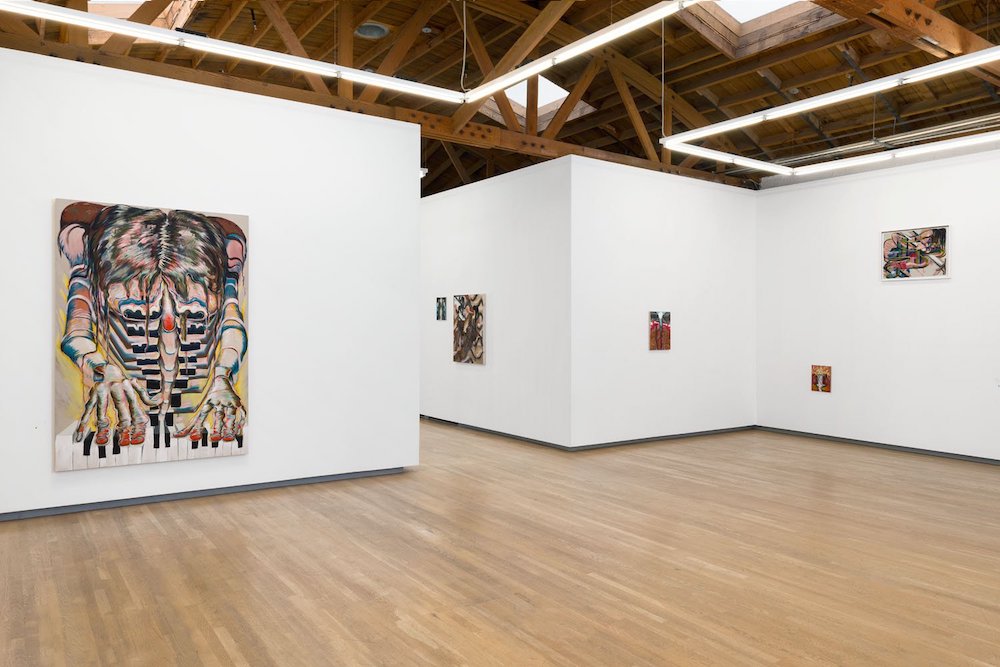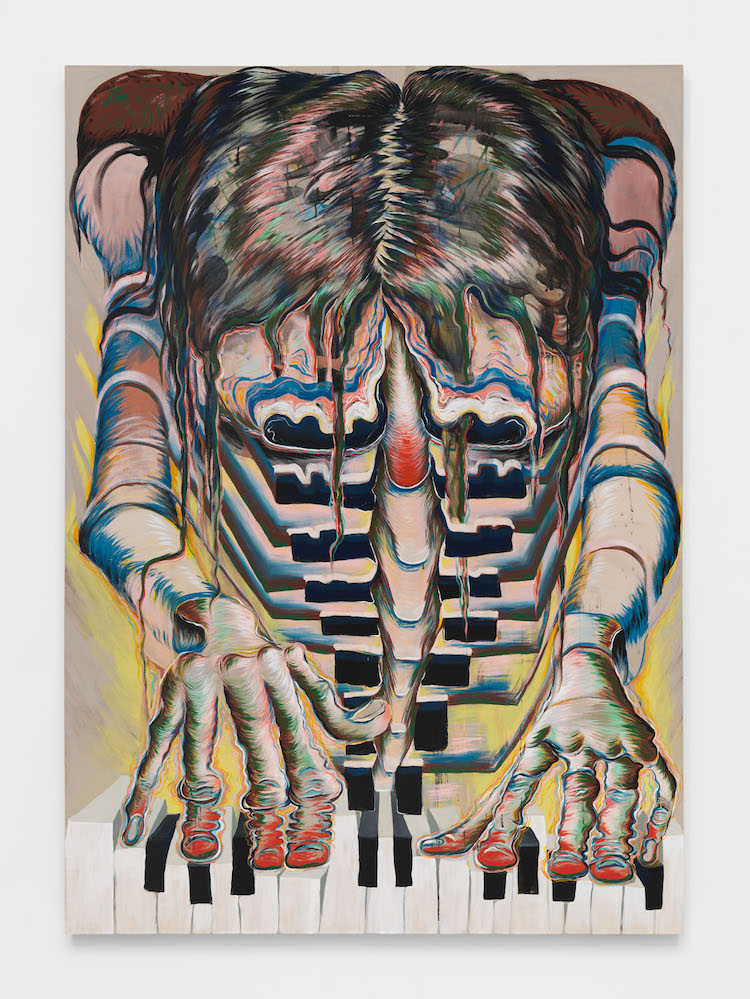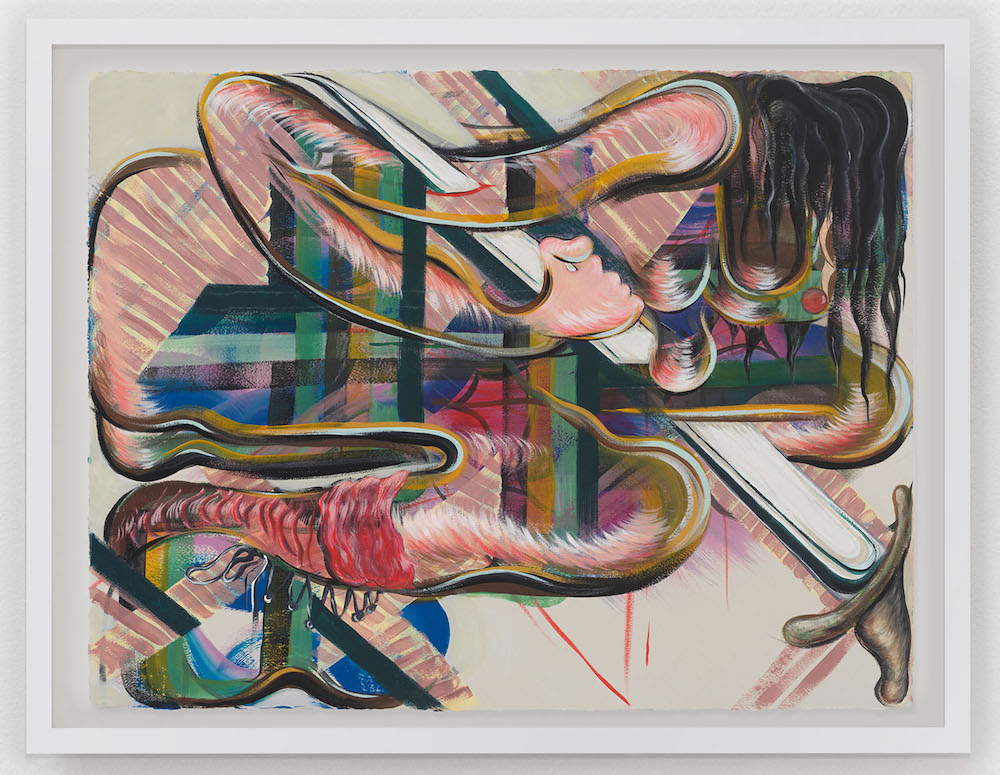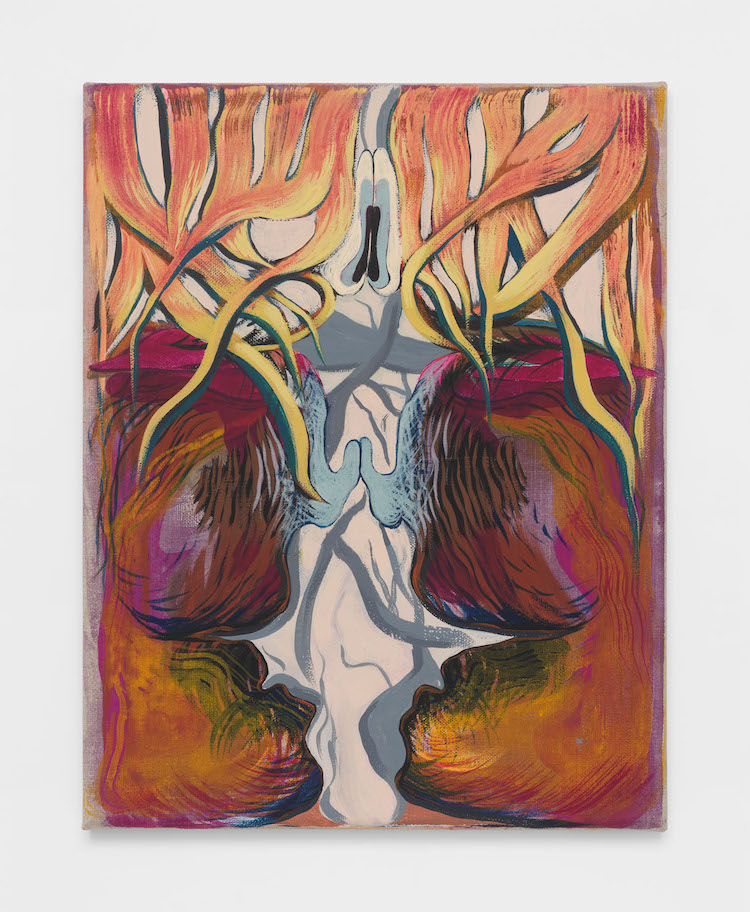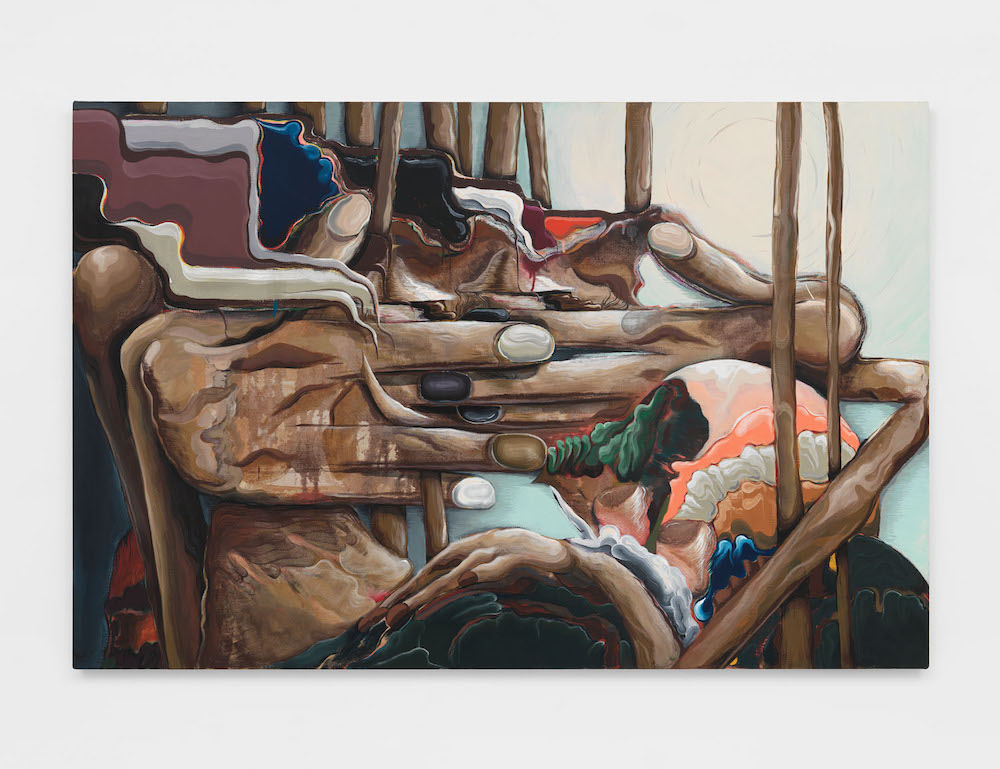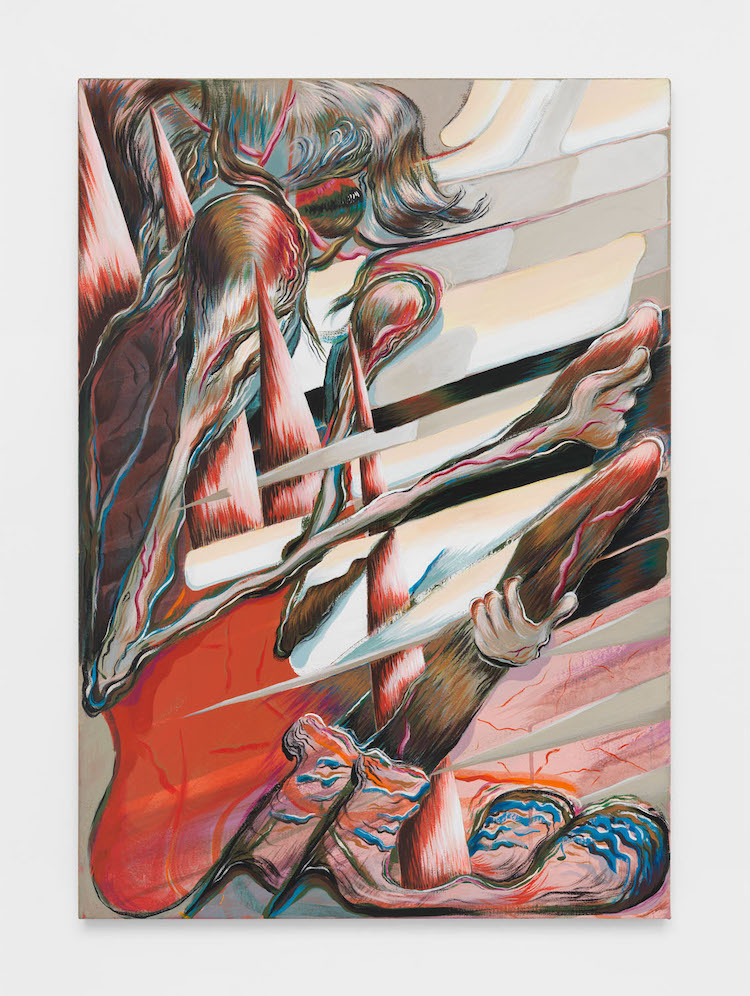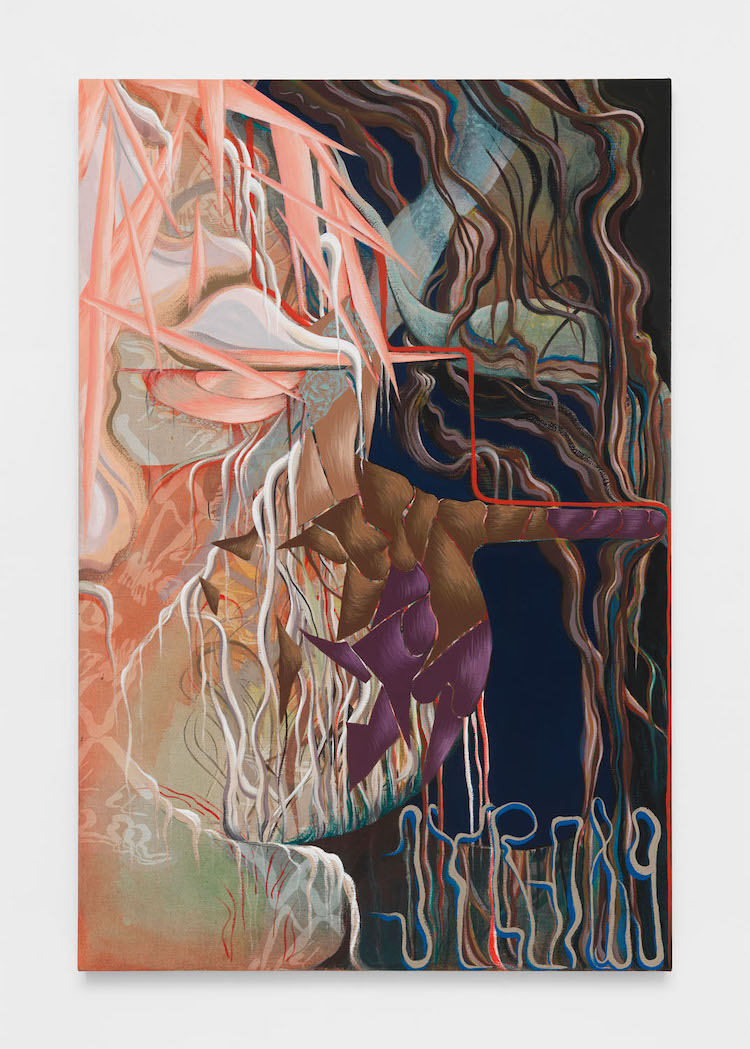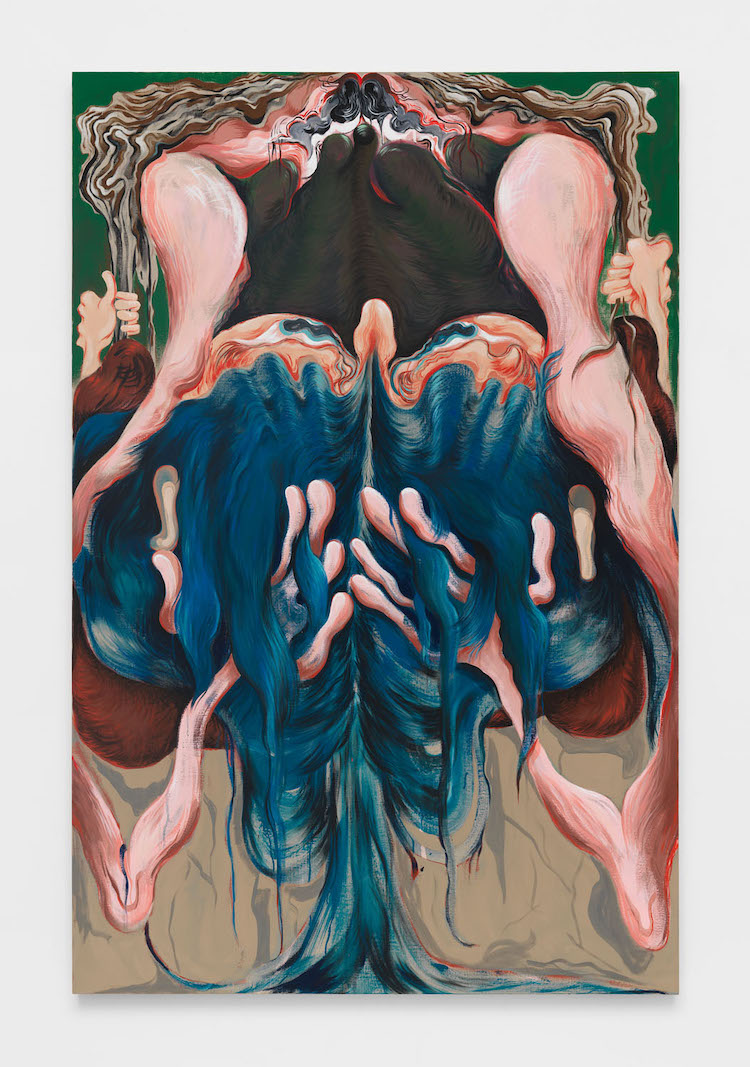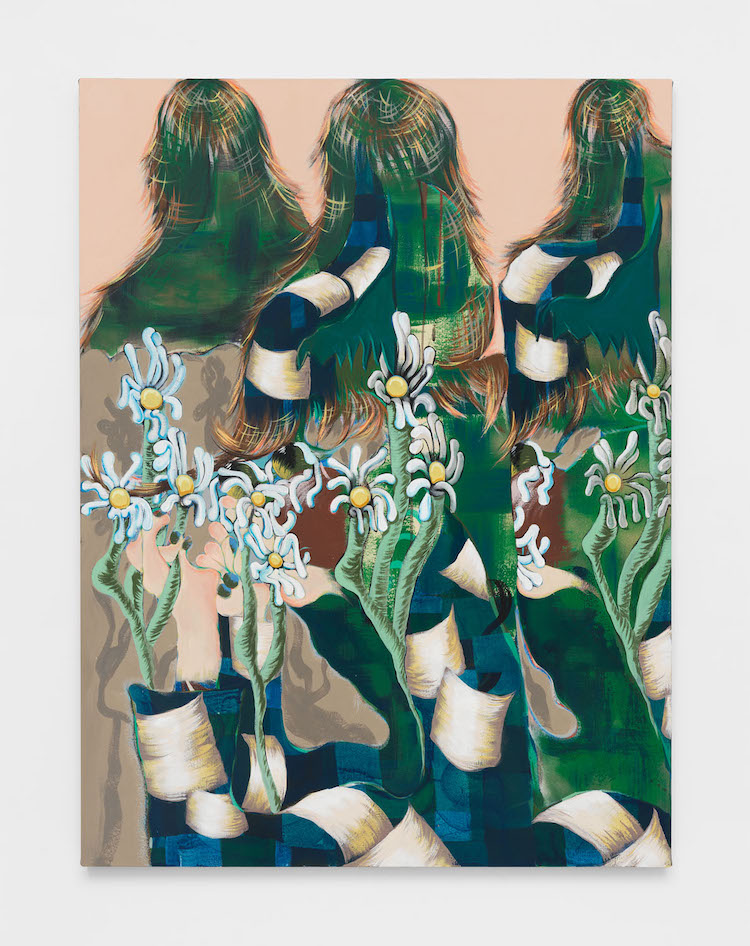Shulamit Nazarian is pleased to present Sensory Homunculus, an exhibition of new paintings by New York-based artist Bridget Mullen. This will be the artist's second solo exhibition with the gallery, on view from January 7 through February 10, 2023. Known for paintings that combine decisive mark-making with experimentation, Mullen’s intuitive practice conjures psychedelic compositions that oscillate between abstraction and figuration.
For Sensory Homunculus, the artist introduces a dialogue on the “problem” of painting, the evergreen discourse on the role of interpretation in art, inviting writer Lara Mimosa Montes as her respondent. Addressing the statement to her peer, Mullen’s dialogue serves as an invitation to consider painting’s ambivalent potential—those distances between painting and artist, observer, body, world—as the space for reflection.
In these paintings there might be anxious, ecstatic, exasperated, snarky, gnarly eyes; eyes at a tipping point, eyes half open but only looking in. There might be big shoulders like football players’ pads beefing up a body or shielding a face. Bird’s eye, mind’s eye, face-to-face, head-on, out-of-body point-of-view. Some shapes have properties that make them seem nameable, and some shapes are nameable but just there for their properties. A painting could be like a body map with parts distorted in proportion to the pitch of feeling held at that part of the body. Unnaturally long arms, monstrous hands, bulging eyes. A sensory homunculus.
Paintings start with wild lines, layered plaids, or abstract shapes, then I repurpose those abstractions, or the spaces between the abstractions, as figures. A few of these works began with a desire to articulate a somatic feeling so loud and persistent that painting body parts inside out seemed the only response. The goal is to run feelings through the obstacle course of my process and use the transmutative abilities of painting to reflect back an invention that resonates.
A painting feels like a frontier. It’s not everything beyond you, it’s the specific space between you and something or someone else—an adaptive, hopeful space. It’s like what’s between thought and when language erupts, or when contact or feeling makes blood bolt to your skin’s surface, blushing, language adjacent, unspoken.
Language shouldn’t solve the “problem” of a painting. What’s the problem? —Bridget Mullen



